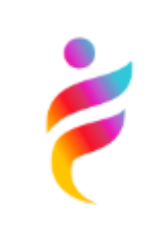In Part 1, we covered the ‘always-on’ mindset – the new reality that employees are having to live with in the workplace. Digital technologies, the work-from-anywhere phenomenon, and instant communication have created barriers to employee health and well-being. The need to always be connected typically leads to digital burnout, or emotional exhaustion, diminishing productivity. But the silver lining is that the problem is both identifiable and reversible.
In Part 2, we concentrate on practical, evidence-based solutions—individual and organizational levels—that will prevent and manage digital burnout, and encourage a healthier, more sustainable work culture.
Organizational Solutions: Redesigning Culture and Policy
1. Set Healthy Boundaries for Digital Communication
Firms need to set healthy boundaries as an example in digital communication. This means:
- No-Email policies after work: Some employers have policies where employees are asked not to send email correspondence after work hours or weekends, except for an actual emergency.
- Clarified Expected Response Times: Instead of having an expectation of receiving immediate feedback from employees, organizations could provide a time frame for expected responses (i.e., 24 hours) that could add clarity to the expectation.
- Designated Communication Times: Knowing that specific times (i.e., morning, lunch, afternoon) are set aside for face-to-face meetings or emails should also minimize interruptions throughout the employee’s workday.
When organizations exhibit these norms, they send a clear signal – you have permission to unplug.
- Promoted “Digital Detox” Breaks
Managers need to incorporate breaks into their workplace culture that actively remove employees from their devices. For example:
- Midday Offline Hours: Some companies provide a block of time in their day where they are concentrated, without meetings or messages.
- Tech-Free Zones: They can also create a tech-free area of the physical or virtual office so employees can unplug temporarily and recharge.
Promoting these behaviours will increase concentration and reduce eye strain while also facilitating cognitive recovery.
- Promote Outcome-based performance rather than Availability.
Because managers reward success based on employee availability and speed of response only, they naturally cause employees to overwork mentally. Shifting toward an outcome-based work culture, where productivity and performance are evaluated on output rather than being literally online for hours, eases the pressure of riding the wave of being connected to work all the time.
Employees should be allowed the freedom to manage their time and pace of work as long as they are getting their deliverables done.
4. Digital Well-being Training and Resources
Organizations need to offer training sessions that instruct employees on how to manage their screen time, digital fatigue, and self-care, such as:
- Email & notification management workshops
- Instructions on the use of “Do Not Disturb” modes and concentration tools
- Healthy screen habits and ergonomics advice
HR departments ought to be able to provide mental health services, access to counselors, and mindfulness or guided meditation apps.
Individual Strategies: How Employees Can Take Control
1. Establish Personal Digital Boundaries
Even without an organization’s enforcement, individuals can take proactive measures to control their digital exposure:
- Switch off non-essential notifications
- Turn off work emails on personal devices after work hours
- Utilize email auto-responders during leave or off-hours
These little things decrease anxiety and open up mental space for relaxation and concentration.
- Plan Time Without Distractions
The best way to manage burnout is to block time during your day for uninterrupted (who doesn’t also yearn for some level of uninterrupted work time ) work without distractions from your screen, phone, or other digital sources. There are many ways to schedule and decide on how to block time. Pomodoro technique (25 minutes of work, 5-minute break) or calendar blocking are just a few ways to manage to get control back over your scheduled day.
Use programs such as Focus Mode or mobile apps such as Forest or Freedom to assist in staying distraction-free.
3. Practice “Digital Hygiene”
As we look after our physical wellbeing, looking after our digital wellbeing is important too:
- Regular screen breaks with the 20-20-20 rule (every 20 minutes, view something 20 feet away for 20 seconds)
- Don’t use the screen 1 hour before bedtime, as blue light interferes with sleep
- Keep devices out of the bedroom to get better quality sleep
These practices maintain physical and mental well-being in the long run.
4. Communicate Needs Clearly
Workers are reluctant to communicate if they feel overwhelmed. However, sincere communication with managers or teams regarding workload, availability, and signs of burnout can generate changes that are helpful to all.
For instance, proposing a no-meeting day or minimizing the number of tools employed for communication (e.g., between email, Slack, or WhatsApp) can make workflows more basic and lower the level of cognitive overload.
Building a Sustainable Digital Culture
Managing digital burnout does not mean avoiding technology, as in the previous section, but indicates that people should be using technology mindfully. Organizations that embrace a balance of people-centric digital culture will see greater retention, increased creativity, and happier employees.
When employees sense that they are trusted in terms of working in their own time, respected in terms of protecting their own space, and cared for through policies thoughtfully designed with them in mind, they are more likely to be engaged, focused, and psychologically fit for the entire working shift.
In the meantime, those who practice mindful digital behavior can regain time, reduce stress, and enjoy a richer work-life balance.
The digital revolution in the workplace is not going away, but the culture of “being always available” does not have to endure. By reframing the way we work and connect, we can stem the tide of digital exhaustion and build a future of work that is smarter, healthier, and more humane.
KEEP READING FORAMZ FOR MORE UPDATES


Leave a Reply